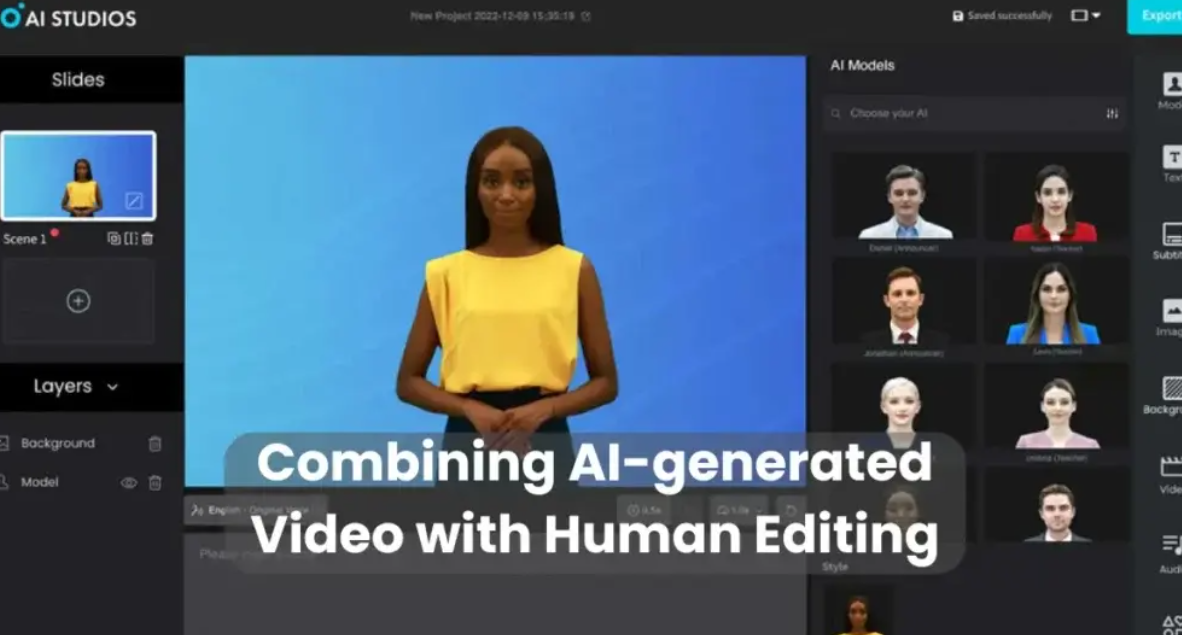The world of digital content is evolving rapidly, and at the heart of this transformation are AI video generators—powerful tools that automate video creation using artificial intelligence. These tools can turn text prompts into engaging video clips, generate animations, apply voiceovers, and even replicate human-like gestures. However, while AI can handle many aspects of production, the true magic happens when human creativity meets machine efficiency. Combining AI-generated video with human editing opens up a powerful hybrid workflow that enhances both productivity and storytelling quality.
The Rise of AI Video Generators
AI video generators such as Runway, Pika Labs, and Sora by OpenAI are gaining popularity among marketers, educators, filmmakers, and content creators. These tools can produce stunning visuals in a fraction of the time and cost traditionally associated with video production. With just a few lines of input text, users can generate scenes, transitions, characters, and voiceovers. AI handles the technical side—animation, camera angles, scene cuts—freeing creators to focus on the big picture.
Despite their strengths, however, these generators are not flawless. The output can sometimes lack nuance, emotional depth, or narrative clarity. That’s where human editors step in, fine-tuning and customizing the raw AI footage into polished, purpose-driven content.
The Power of Human Touch
While AI can generate visuals and audio, it still struggles with understanding tone, context, and emotional impact at a human level. Human editors bring intuition, storytelling skills, and creative judgment that AI simply can't replicate. Editors can rearrange clips for better narrative flow, enhance color grading for mood consistency, adjust pacing for dramatic effect, and ensure that the content resonates with its intended audience.
Additionally, human editors ensure cultural relevance and sensitivity—areas where AI occasionally stumbles. They can spot awkward expressions, fix unnatural movements, and sync visuals with music or narration in ways that AI cannot fully automate yet. By bridging the gap between AI efficiency and human empathy, editors play a critical role in crafting videos that connect and convert.
How the Workflow Looks in Practice
A typical workflow combining AI video generators and human editing might start with a script or concept. The script is entered into an AI video generator, which produces the first draft of the video. This might include generated scenes, transitions, AI voices, and animations. Once the draft is complete, human editors take over.
Using tools like Adobe Premiere Pro, DaVinci Resolve, or After Effects, editors refine the video. They clean up inconsistencies, add branding elements, select background music, and even incorporate additional footage or overlays. This hybrid model cuts down on production time by as much as 60%, while still producing high-quality, personalized content.
Benefits of the AI-Human Combo
Speed and Efficiency: AI dramatically reduces the time it takes to create a video from scratch.
Creative Flexibility: Human editors can inject creativity, adapt tone, and ensure emotional resonance.
Cost Savings: Hybrid production is far cheaper than fully human-led processes while maintaining professional quality.
Scalability: Brands can produce large volumes of content quickly, with consistent messaging and style.
Accessibility: Even small teams or solo creators can produce high-end videos using this method.
Future Outlook
As AI video generators continue to evolve, they will become more intuitive, context-aware, and customizable. We can expect a future where AI tools are not just assistants but true creative partners. However, human input will remain essential—especially in areas like storytelling, ethics, and audience engagement.
In conclusion, the combination of AI-generated video with human editing represents the best of both worlds. By leveraging AI for speed and automation while applying human insight for refinement and creativity, creators can produce compelling, high-quality video content at scale. This powerful synergy is not just a trend—it’s the future of content creation.




